A Manual Meatball Maker is a specialized kitchen utensil designed to portion and shape ground meat mixtures into perfectly uniform spheres quickly, cleanly, and efficiently. It eliminates the need for rolling meatballs by hand, which can be a messy, time-consuming process that often results in unevenly sized and densely packed meatballs.
Core Principle and Mechanism
The fundamental principle of a manual meatball maker is simple: it uses a two-part mold to portion the meat and form it into a sphere with minimal hand contact.
The typical mechanism involves:
Two Interlocking Halves (Clamshell Design): The tool consists of two identical hemispherical cups, connected by a hinge or a sliding mechanism.
The Portioning Cavity: When the tool is open, you place a portion of the meat mixture into each cup.
The Forming Action: When you close the tool, the two hemispheres press together. The excess meat is squeezed out through a designed gap or overflow channel, ensuring that each meatball contains the same amount of meat and is perfectly round.
The Release: You open the tool to reveal a uniformly shaped meatball, ready for cooking.
Key Components and Materials
Body/Halves: The main part of the tool, containing the hemispherical cups.
Materials:
Plastic (ABS, Nylon): The most common material. It's lightweight, durable, dishwasher-safe (typically top rack), and affordable. Often features a non-stick coating.
Stainless Steel: Less common but offers superior durability, heft, and is often dishwasher-safe. It's resistant to rust and staining.
Aluminum: Sometimes used and often coated with a non-stick material like Teflon.
Hinge or Sliding Mechanism:
Hinge (Clamshell): The most prevalent type. It works like a pair of pliers or scissors, with the user squeezing the handles together to close the hemispheres.
Slide/Tray (Ice-Cream Scoop Style): This type features a single hemispherical cup with a sliding mechanism or a trigger-activated sweeper that pushes the formed meatball out.
Non-Stick Surface: Many modern meatball makers have a non-stick coating on the molding surfaces. This is crucial for ensuring the meat releases cleanly without sticking and tearing, making cleanup much easier.
Overflow Channel/Gap: A critical design feature. This is the small gap between the two halves when closed. It allows the exact amount of meat needed for the sphere to remain inside while the excess is cleanly squeezed out. This is what guarantees consistent size and prevents over-packing.
Types of Manual Meatball Makers
The Classic Clamshell (Single or Multiple):
Single-Ball Maker: Forms one meatball at a time. Ideal for smaller batches or for making larger meatballs.
Multi-Ball Maker: Typically forms two or four meatballs simultaneously. This significantly speeds up the process for larger meals or meal-prepping.
The Spring-Loaded Scoop (Trigger-Type):
This style resembles an ice-cream scoop. The user presses the scoop into the meat mixture to fill the cavity, and then pulls a trigger or pushes a slider, which activates a sweeper arm that ejects the perfectly formed meatball. This style is excellent for speed and one-handed operation.
The Tray-Style Maker:
This consists of a flat tray with multiple hemispherical depressions. You place a second, identical tray on top, press down, and the meatballs are formed in each cavity. This is the best option for making very large quantities at once.
Step-by-Step Usage Guide
Using a manual meatball maker is a straightforward process:
Prepare the Mixture: Have your ground meat mixture ready. It's important that the mixture is well-combined but not overworked.
Lightly Grease (Optional): If your tool does not have a reliable non-stick coating, a quick spray of cooking oil can help with release.
Portion and Fill:
For Clamshell: Open the tool and place a loose, slightly heaped amount of meat into each hemisphere. Do not pack it in.
For Scoop-Type: Press the scoop into the meat mixture to fill the cavity.
Close and Compress:
For Clamshell: Firmly squeeze the handles together until they close completely. You will see a small amount of excess meat being pushed out through the overflow channel.
For Scoop-Type: The filling action often compresses it. Then, pull the trigger over your baking sheet or pan.
Release the Meatball:
Open the clamshell or activate the release mechanism. A perfectly round meatball should drop out easily.
Repeat and Clean:
Continue the process. Most tools are dishwasher safe for easy cleanup, but hand-washing is recommended for tools with non-stick coatings to preserve their surface.
Advantages of Using a Manual Meatball Maker
Uniformity: The primary benefit. Consistently sized meatballs cook evenly, ensuring they are all done at the same time without some being over or undercooked.
Speed and Efficiency: Dramatically faster than rolling by hand, especially multi-ball models.
Hygiene and Cleanliness: Minimizes direct hand contact with the raw meat, keeping your hands much cleaner and reducing cross-contamination risks.
Light and Airy Texture: Because the tool doesn't overwork or compact the meat like hand-rolling often does, the resulting meatballs tend to be more tender and light.
Perfect for Meal Prep: Allows for quick preparation of large batches of meatballs for freezing or use throughout the week.
Limitations and Considerations
Size Inflexibility: Each tool is designed for a specific meatball size. You would need different tools to make small (appetizer) vs. large (main course) meatballs.
Can Struggle with Chunky Mix-ins: If your meat mixture contains large pieces of vegetables, cheese, or other ingredients, they can get caught in the hinge or prevent a clean seal.
One More Tool to Store: It is a single-purpose gadget, which can be a drawback for those with limited kitchen storage space.
The Manual Meatball Maker is a testament to the idea that the simplest tools can make the most significant impact in the kitchen. It solves a specific, common problem with an elegant and efficient solution. For anyone who regularly makes meatballs, Swedish meatballs, arancini, or even round falafel, this inexpensive gadget is a worthwhile investment that pays for itself in saved time, reduced mess, and perfectly cooked, professional-looking results.
 | 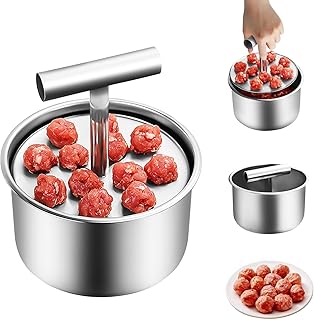 | 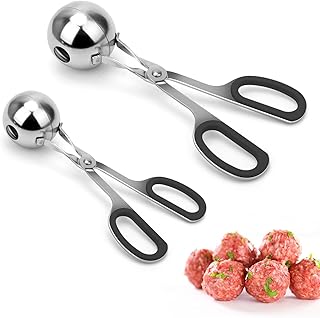 |
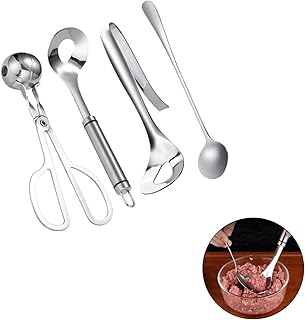 | 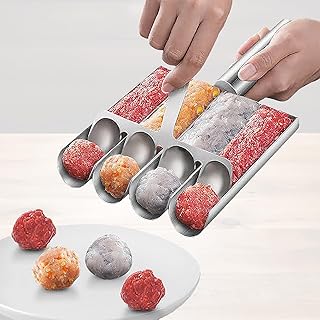 | 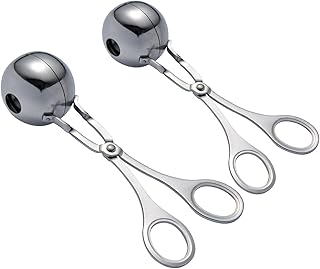 |
